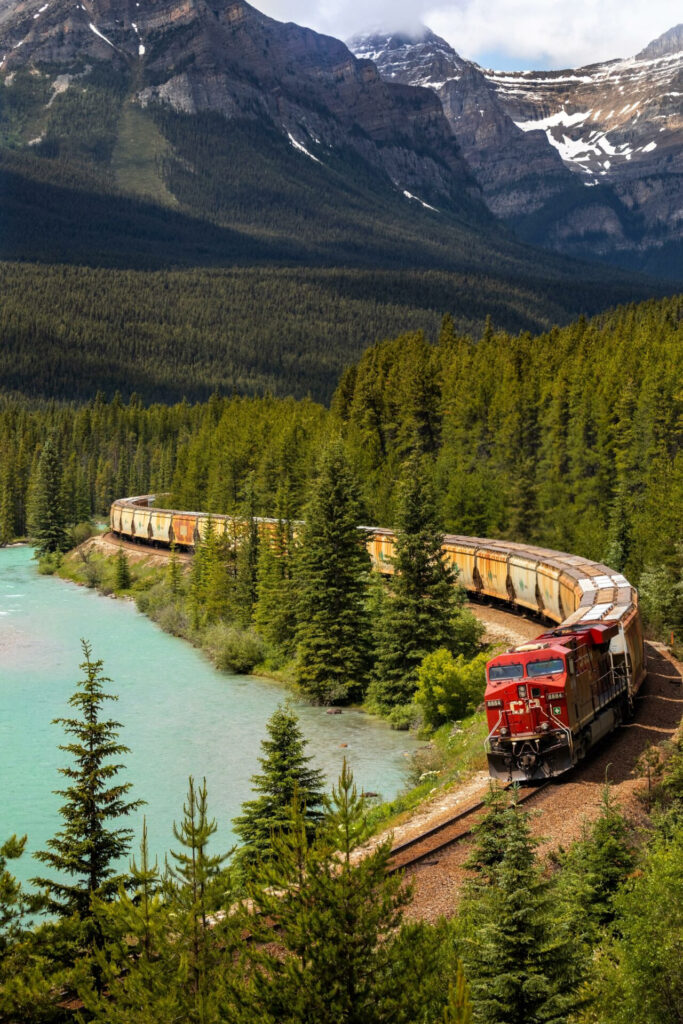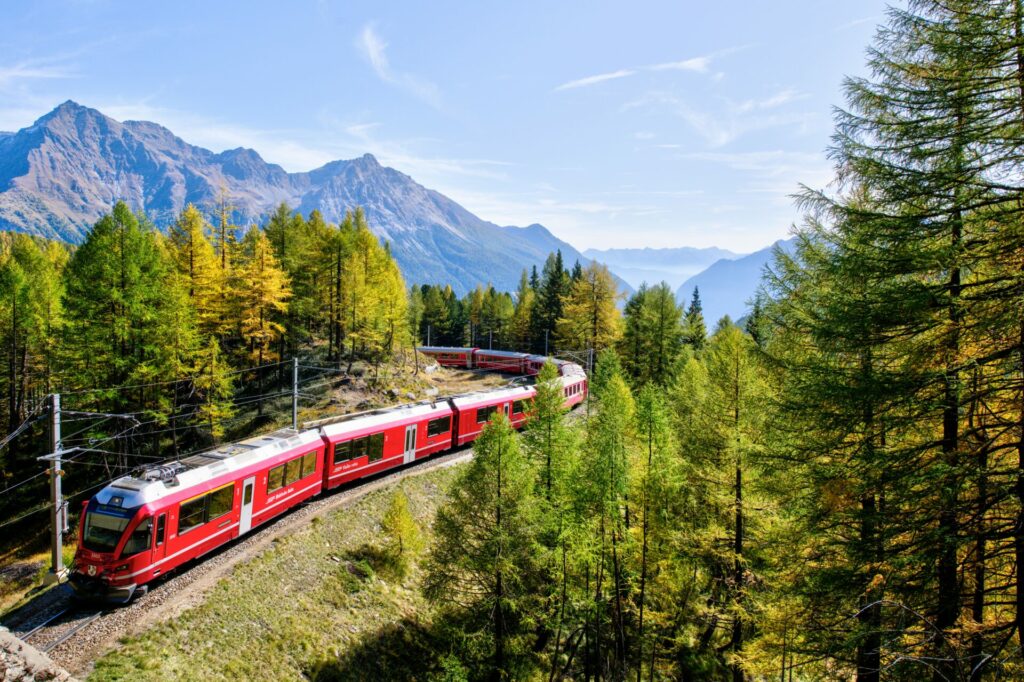Innovation thrives on inspiration. When experts gather and willingly share their knowledge, it creates an environment that nurtures ideas, insights, and expands horizons. The Alpine Rail Optimisation event, held in Vienna on October 19th for the fourth consecutive year, exemplifies such a place. Ben Holliday and Rotaia Media successfully brought together top rail experts from Austrian, Swiss, German, Italian, and French Railways onto one platform. Dan Mac Gregor expertly and entertainingly led this audience through lively discussions as we explored how these experts are leveraging the latest digital trends.
Here are some key takeaways and expert perspectives from Alpine Rail Optimisation:
What the most significant developments in the rail industry’s digitalization journey look like
“Obviously, IoT Technology has enabled remote assessment and better management of asset health for years,” highlights Markus Schumann, Director Sales, Digital Products & Services at Knorr-Bremse. Looking ahead, he envisions the next evolution in freight transportation, particularly powered by the Digital Automated Coupler (DAC). According to Schumann, this advancement will elevate freight operations to new levels and drive the desired modal shift.
Florian Auer, Director of Technology at Plasser & Theurer, identifies three key trends that are shaping the digital landscape of the rail industry. These include real-time asset relocation, the extension of predictive maintenance to monitor rail asset health, and the utilization of aerial inspection capabilities. Auer emphasizes the transformative role of drones in providing a fresh perspective on rail infrastructure, enabling decision-makers to obtain a holistic view of issues and access crucial facts about their assets.
How maintenance changes from “Find and Fix” to “Predict and Prevent”
Rasmi Gupta, Head of Railways Strategic Initiative at TATA Consultancy Services, highlights the remarkable shift from a traditional scheduled and reactive maintenance approach to an intelligent, proactive, and predictive methodology. This transformation is driven by the integration of IoT, Big Data, Cloud, and related technologies.
“These innovations work synergistically to enhance operational efficiencies and strengthen asset reliability, enabling a transition from a reactive ‘find and fix’ mindset to a proactive ‘predict and prevent’ strategy,” explains Gupta.
Amogh Shurpali, Product Owner Continuous Track Monitoring at Sensonic, supports this viewpoint, stating, “The railway industry is faced with the challenge of accomplishing more with fewer resources, and maintenance plays a pivotal role in addressing this challenge.”
How the industry and products change
“When it comes to equipment, digital technology shall much more follow a product and not an individually designed solution approach”, mentions Markus Schumann. This ensures that commercial off the shelf products can be used which are typically lower in costs. The second implication is that digital products shall more be seen as a digital service.
Waqaas Rehman, Business Development Head at InstaDeep, also sees a shift in the investment strategy. “When it comes to software in general and AI in particular, the railway industry could further improve by switching from a capex-centric perspective to a more flexible model, including intermittent opex-level investments that can be called more “on-demand.”
Why we not need more data, but more actionable information
Railways have never had access to so much data, says Amogh Shurpali. “However there is the real risk of being drowned in data, or as I prefer to put it in, being ‘data-rich, but information-poor’.”
His company relies on AI, cloud processing and machine learning to deliver actionable insights from the amount of data. Alerts when a rockfall or intruder occurs on the track, or highlighting an increasing trend in track deterioration, all given with precise locations – such usable, manageable information contributes to a safer, more efficient and more reliable railway. And that, Shurpali claims, is the prerequisite for any desired modal shift.

Why the importance of cyber security is growing
Data not only brings opportunities, but also poses security risks in terms of cyberattacks. This is where Israel Baron, Vice President of Customer Relations at Cervello, brings his expertise. Due to the war in the Middle East, he was unable to attend the Alpine Rail Optimisation conference in person, but was tuned in live from Tel Aviv. He emphasizes that cyberattacks can impact various aspects of railway operations. This includes problems with signaling, service disruptions leading to supply chain delays, brake issues requiring immediate repair, and even air conditioning malfunctions causing delays and decreased customer satisfaction.
The signaling system of a railway is particularly vulnerable and poses significant risks such as collisions and derailments. Vulnerabilities and misconfigurations in network systems provide hackers with opportunities to infiltrate and navigate the network until they reach their intended target. “From amateurs to nation-state levels, attackers look for these weak points to enter, and pivot around a network until they arrive at a point to cause damage to physical, environmental, financial or business”, he says.
To combat these threats, Cervello employs passive, non-intrusive software that constantly monitors and identifies real-time cyber threats. This software enables the isolation of affected assets through network segmentation, ensuring the safe continuation of unaffected railway services.
Why digital technologies need a shift in thinking
In intricate environments, digital technologies such as an AI system can provide superior insights into the reasoning behind a specific decision compared to a conventional system. This is primarily due to the fact that conventional systems do not consider nearly as much information as an AI system does. “In order to allow railways to implement AI into their operations, we need to think in terms of the quality of results,” says Waqaas Rehman. “We need to compare our innovative methods with the traditional ones, based on objective outcomes, not on how the respective systems got there.”
Jarek Rosinski, CEO at Transmission Dynamics sees a very common and swift culture change when new clients adopt their technologies. “Understandably, there are always some initial delays and even hesitation in changing behavior until these alerts are proven to detect a significant fault”, he says.
Unfortunately, these failures may deteriorate and become bigger issues before clients have been able to make the necessary arrangements to resolve them. “However, once this has happened and it’s clearly evidenced this could have been preventable had the alerts been acted on promptly, things start to change for the better.”
Why partnerships and collaborations get more and more important
As we all know: Knowledge is the only asset that grows when shared. Markus Schumann is convinced that the full benefit of automated and digitized services only unfolds in partnerships. Jarek Rosinski agrees: “From both a technical and commercial perspective, open innovation and strong collaboration is key.”
Are you looking for a reliable partner to bring your predictive maintenance on the right track? Don’t hesitate to get in touch with us. AXO Track upgrades railway infrastructure with retrofit technologies to reduce costs, increase safety, and boost productivity.



